If you want to make yard cleanup quick and easy, a leaf vacuum mulcher could be your best friend. This handy tool sucks up leaves, shreds them into tiny pieces, and helps you reuse them as mulch or compost. You get more than just a cleaner yard—using a leaf vacuum mulcher means less time bagging leaves and more time enjoying your outdoor space.
Many people love these tools because they work well in flower beds, handle big piles of leaves, and can even help with sawdust or light snow. Whether you use a powerful Gas Leaf Mulcher - 3.4HP 145CC or a quieter Electric Leaf Mulcher, you’ll notice the difference right away.
If you have a lot of trees or want to keep your garden looking neat, you’ll find this tool especially helpful.
Key Takeaways
-
Leaf vacuum mulchers pick up and chop leaves fast. This makes cleaning your yard quicker and simpler.
-
These tools can be gas, electric, or battery powered. Each type works best for different yards and needs.
-
You can use chopped leaves as mulch or compost. This helps your plants and cuts down on waste.
-
Get your yard and machine ready before you start. Work with dry leaves and always wear safety gear.
-
Clean and take care of your leaf vacuum mulcher often. This helps it last and work well for a long time.
Leaf Vacuum Mulcher Basics
What Is a Leaf Vacuum Mulcher
A leaf vacuum mulcher is a tool that helps you clean up your yard by sucking up leaves and turning them into small pieces. You can think of it as a vacuum for your lawn, but it does more than just collect leaves. It shreds them, making it easier to fit more into the collection bag and giving you mulch for your garden. If you have a lot of trees or want to save time, this tool can make yard work much easier.
Tip: Some people call these machines a leaf vacuum shredder because they chop up the leaves as they collect them.
How It Works
When you use a leaf vacuum, the machine pulls in leaves and other debris through a hose or nozzle. Inside, a spinning blade or impeller chops the leaves into tiny bits. This process is called mulching. The shredded leaves then go into a collection bag or bin. You can empty the bag when it gets full and use the mulch in your garden or compost pile.
-
The mulching process can reduce the volume of leaves by up to 18 times. That means you can fit a lot more in the bag compared to raking and bagging whole leaves.
-
Finer mulch breaks down faster, which is great for your plants and soil.
-
Manual raking leaves the leaves whole, so they take up more space and break down slowly.
Types and Features
You can find several types of leaf vacuum mulchers. The most common are gas-powered, electric (corded), and battery-operated models. Each type has its own strengths:
-
Gas-powered leaf vacuums are strong and work well for big yards or heavy debris. They can be noisy and need regular maintenance.
-
Electric corded models are lighter and quieter. They are easy to use but need to stay plugged in, so you have to watch the cord length.
-
Battery-operated or portable leaf vacuum models are easy to move around. They are quiet but may not last as long on a single charge.
When you look for a leaf vacuum, check for features like:
-
Strong suction power for picking up wet or dry leaves, twigs, and even acorns.
-
Durable metal impellers for better mulching leaves.
-
Large, easy-to-empty collection bags.
-
Adjustable speeds and user-friendly controls.
-
Wheels for easy movement and storage options.
Many leaf vacuums also work as blowers and mulchers, giving you more ways to clean your yard. Some even come with extra hoses for hard-to-reach spots. If you want a tool that does it all, a leaf vacuum mulcher is a smart choice.
Yard Cleanup Benefits

Why Use a Leaf Vacuum Mulcher
Raking leaves every fall can make you tired. A leaf vacuum mulcher lets you clean your yard fast. It works about as quickly as mowing your lawn. This tool is much easier to use than a rake. You walk around, and the machine picks up the leaves. The machine does most of the hard work for you.
People like that these machines turn leaves into mulch. You can put this mulch in your garden or compost pile. Mulch helps your plants and saves space in your trash bags. Most leaf vacuums can also blow leaves into piles. This makes it easy to pick up yard debris. If you have many trees, cleaning up is much easier with this tool.
Here are some reasons people like using a leaf vacuum:
-
You do not have to empty the bag as often.
-
The mulch is good for gardens and compost.
-
Handles are comfy, and cordless types are easy to move.
-
High mulching ratios let you collect more leaves.
-
The impeller chops up leaves and speeds up cleanup.
-
You can use bags or hoses for different jobs.
-
You can switch between blower and vacuum modes.
-
Strong motors help clear tough yard messes.
Pros and Cons
You want to know why a leaf vacuum mulcher is helpful. But you should also know what is not so great. Look at this table to see the main pros and cons:
|
Advantages |
Disadvantages |
|---|---|
|
Makes leaves smaller for easy cleanup and compost |
Corded types need a cord, so you cannot go far |
|
No more raking by hand |
Cordless types run out of battery faster |
|
You can pick gas, corded, or cordless models |
Some handheld types are heavy to carry |
|
Electric types are lighter and quieter |
Gas types are loud and make fumes |
|
Cordless types are easy to move |
Small bags fill up fast |
|
You can change speed and suction |
Stationary types are harder to move |
|
Some are easy to carry |
Gas types can be hard to start and heavy |
|
Noise can be a problem, gas is loudest |
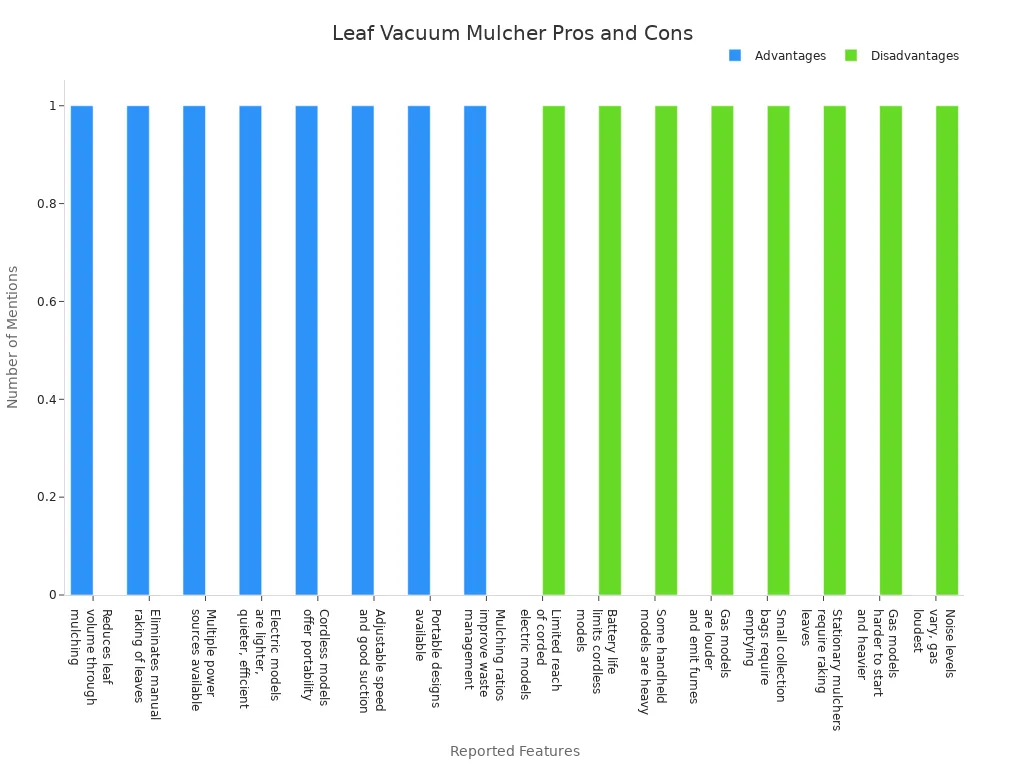
A leaf vacuum makes yard work faster and easier. But you should think about your yard size and how much power you want. Some types are heavy or loud. You may need to empty the bag a lot if you have many leaves. Still, most people think these tools save time and work. They are much easier than using a rake or leaf blower.
Using a Leaf Vacuum Mulcher

Preparation Steps
Before you start, you want to make sure your tool is ready and your yard is safe. Here’s a simple checklist to follow:
-
Look over your machine for any loose parts or damage. Tighten anything that seems off.
-
Check the air filter. Make sure it’s clean. If you use a gas model, fill the tank with the right mix of gasoline and oil.
-
Clear your workspace. Pick up rocks, sticks, and any large yard debris. This helps prevent clogs and damage.
-
Read your owner’s manual. It tells you how to use your tool safely and avoid injuries.
-
If you have a gas-powered model, press the primer bulb a few times and set the choke lever to help the engine start.
-
Make sure the on/off switch is set to “On.”
-
Wear safety gear. Goggles, gloves, and ear protection keep you safe from dust and noise.
-
Only use your tool outside or in a well-ventilated area. This keeps you from breathing in fumes.
Tip: Always check your vacuum before and after use. Turn it off completely before you inspect or clean it.
Best Practices
You want to get the most out of your leaf vacuum mulcher. Try these tips for better results:
-
Work when leaves are dry. Wet leaves can clog your machine and slow you down.
-
Blow leaves into piles first if your tool has a blower mode. This makes vacuuming faster.
-
Walk in a straight line and swing the vacuum in a gentle arc. This helps you cover more ground.
-
Adjust the vacuum speed for different surfaces. Use lower speeds on gravel or mulch beds to avoid sucking up stones.
-
Empty the collection bag often. A full bag makes the vacuum less powerful.
-
Remove sticks, stones, and large debris before you start. This keeps your tool running smoothly.
-
Practice using your tool. Get used to its weight and how it feels. You’ll work faster and safer with a little practice.
Note: Only vacuum small branches and twigs—no bigger than 1.5 inches thick. Forcing large debris can damage your machine.
Safety Tips
Staying safe is just as important as getting the job done. Here are some key safety tips:
-
Never let children use the equipment. Only adults should operate it.
-
Don’t use your tool on ladders or rooftops. Keep your feet on the ground.
-
Avoid using the vacuum when you feel tired, sick, or distracted.
-
Wear protective gear every time. Use goggles, hearing protection, gloves, and a dust mask if needed.
-
Keep loose clothing and jewelry away from moving parts. They can get caught in the machine.
-
Handle fuel carefully. Store it in a safe place and clean up spills right away.
-
Watch out for fire risks. Fuel leaks and hot engines can cause fires.
-
Check for recalls or defects before each season. Well-maintained tools are safer to use.
-
Don’t try to vacuum up gravel, construction dust, or anything that isn’t yard debris.
Safety first! Take your time and follow the instructions in your manual. You’ll protect yourself and your equipment.
Leaf Vacuum Mulcher Maintenance
Cleaning and Storage
Taking care of your leaf vacuum mulcher helps it last longer. After you use it, wipe off leaf dust and dirt from the outside. This keeps grime from building up and makes your tool look nice. Always empty the collection bag when it is full. Wet leaves left inside can cause mold or bad smells.
Check for loose or broken parts before and after you use your mulcher. Change trimmer strings if they look worn out. If you have a gas-powered model, check the spark plug and air filter. Clean the air filter every month if you use your mulcher a lot. This helps the engine work better and stops damage.
Here are some easy cleaning and storage tips:
-
Wipe the outside after each use to get rid of dust and sticky sap.
-
Clear debris from cooling vents and intake ports so the motor does not get too hot.
-
Hang your mulcher on wall hooks during winter to save space and keep it safe.
-
Take out batteries from cordless models and keep them at room temperature.
-
Store attachments in vacuum-sealed bags to save space.
-
Take apart foldable models if you need more room in your shed or garage.
Tip: Always keep your leaf vacuum mulcher in a dry place. Water can rust metal parts and hurt the motor.
Troubleshooting
Sometimes your leaf vacuum mulcher may not work right. Do not worry! Most problems are easy to fix. Check this table for quick ways to solve common issues:
|
Problem |
What Might Be Wrong |
What You Can Do |
|---|---|---|
|
Recoil starter won’t pull |
Debris stuck, low or dirty oil, broken starter |
Clear debris, check oil, inspect starter parts |
|
Engine turns over but won’t start |
Loose spark plug wire, old oil, stale fuel, wrong settings, dirty spark plug |
Attach spark plug wire, change oil, use fresh fuel, adjust settings, clean or replace spark plug |
|
Electric start won’t work |
Blown fuse, loose wires, low battery, bad ground |
Replace fuse, tighten wires, charge battery, check ground connections |
|
Engine runs rough or lacks power |
Wrong throttle, dirty air filter, old fuel, dirty spark plug |
Set throttle to FAST, clean air filter, use fresh fuel, replace spark plug |
|
Engine smokes |
Low oil, dirty air filter, dirty cooling fins, running on a slope |
Add oil, clean air filter, clean cooling fins, avoid steep slopes |
|
Poor vacuum performance |
Full bag, wrong throttle, clogged nozzle, missing hose cap |
Empty bag, set throttle to FAST, clear nozzle, replace hose cap |
|
Too much vibration |
Damaged blade, loose impeller, loose bolts |
Replace blade, tighten impeller and bolts |
|
No self-propelling action |
Transmission not in gear, clutch not engaged, broken belt or chain |
Engage transmission, adjust clutch, replace belt or chain |
|
Noisy drive chain |
Needs oil, chain too loose |
Lubricate chain, adjust tension |
Gas-powered mulchers need more care than electric ones. You have to change oil, store fuel, and replace spark plugs. Electric models need less work. Just clean them and take care of the battery.
|
Power Source |
Maintenance Needs |
|---|---|
|
Gas-powered |
Oil changes, fuel storage, spark plug replacements, regular checks |
|
Corded Electric |
Simple cleaning, check for loose parts |
|
Cordless Electric |
Clean tool, remove and store batteries, replace batteries if needed |
Note: If you follow these steps, your leaf vacuum mulcher will stay ready for every season!
Alternatives for Yard Cleanup
Leaf Vacuum vs. Leaf Blower
You might wonder if you should use a leaf blower or a leaf vacuum for your yard. A leaf blower works fast. It pushes leaves into piles in minutes, which saves you a lot of time and effort. Many people like using a leaf blower for big, open spaces because it quickly moves dry leaves off lawns, driveways, and sidewalks. If you want speed, a leaf blower is hard to beat.
A leaf vacuum does a different job. It sucks up leaves and shreds them into mulch. This makes cleanup neater and less dusty. You can use a leaf vacuum in flower beds or tight spots where a leaf blower might scatter dirt and debris. Landscapers often use both tools together. They use a leaf blower to gather leaves, then switch to a leaf vacuum for a detailed finish.
Tip: If you want a clean yard with less mess, try using a leaf vacuum after you use a leaf blower.
Leaf blowers can be noisy, especially gas-powered ones. They also blow dust and sometimes even topsoil, which can hurt your plants. Electric leaf blowers are quieter but may not have as much power.
Leaf Vacuum vs. Mulching Mower
A mulching mower chops up leaves as you mow your grass. This tool works best if you have a lot of leaves spread out over your lawn. You just mow as usual, and the mower shreds the leaves into small pieces that feed your grass. You do not have to bag or collect anything.
A leaf vacuum, on the other hand, collects and mulches leaves at the same time. You can use the mulch in your garden or compost pile. If you want to reuse leaves as mulch, a leaf vacuum gives you more control over where the mulch goes.
Choosing the Right Tool
Picking the right tool for yard cleanup depends on your needs. Here is a quick table to help you decide:
|
Tool |
Best For |
Pros |
Cons |
|---|---|---|---|
|
Leaf Blower |
Fast cleanup, large open areas |
Quick, easy to use, covers big spaces |
Noisy, can scatter debris, less neat |
|
Leaf Vacuum |
Detailed cleanup, mulching |
Collects and mulches, less dust |
Slower, bag fills up, heavier |
|
Mulching Mower |
Lawns with scattered leaves |
No extra steps, feeds your lawn |
Not for piles, misses tight spots |
Many people make the mistake of using the wrong tool for the job. If you use a leaf blower in flower beds, you might blow away mulch or soil. If you use a mulching mower on thick piles, it can clog. Always match your tool to your yard and the job you want to do.
Note: Investing in the right tool makes yard cleanup faster and keeps your plants healthy. If you are not sure, ask a local garden center for advice.
You now know that a leaf vacuum mulcher can save you time and effort by shredding leaves into mulch, which helps your garden stay healthy and reduces weeds. These tools work best on dry leaves and come in different types to fit your yard size and needs. Regular cleaning and smart use keep your machine running for years. Think about your yard, how much maintenance you want, and if you need extra features. With the right choice, you can make yard work much easier and more efficient than using a rake or even a leaf blower.
FAQ
How do you stop a leaf vacuum mulcher from clogging?
You can prevent clogs by picking up sticks and large debris before you start. Always use your vacuum on dry leaves. Empty the bag often. If you notice a clog, turn off the machine and clear it safely.
Can you use a leaf vacuum mulcher on wet leaves?
You should avoid vacuuming wet leaves. Wet leaves stick together and can clog your machine. Wait until the leaves dry out. Your vacuum will work better and last longer.
What should you do with the mulched leaves?
You can spread mulched leaves around your garden as mulch. They help keep moisture in the soil and stop weeds. You can also add them to your compost pile. Mulched leaves break down faster than whole leaves.
How loud is a leaf vacuum mulcher?
Most leaf vacuum mulchers make noise, especially gas-powered ones. Electric models run quieter. You should wear ear protection if you use your vacuum for a long time. Check the product label for the decibel rating.


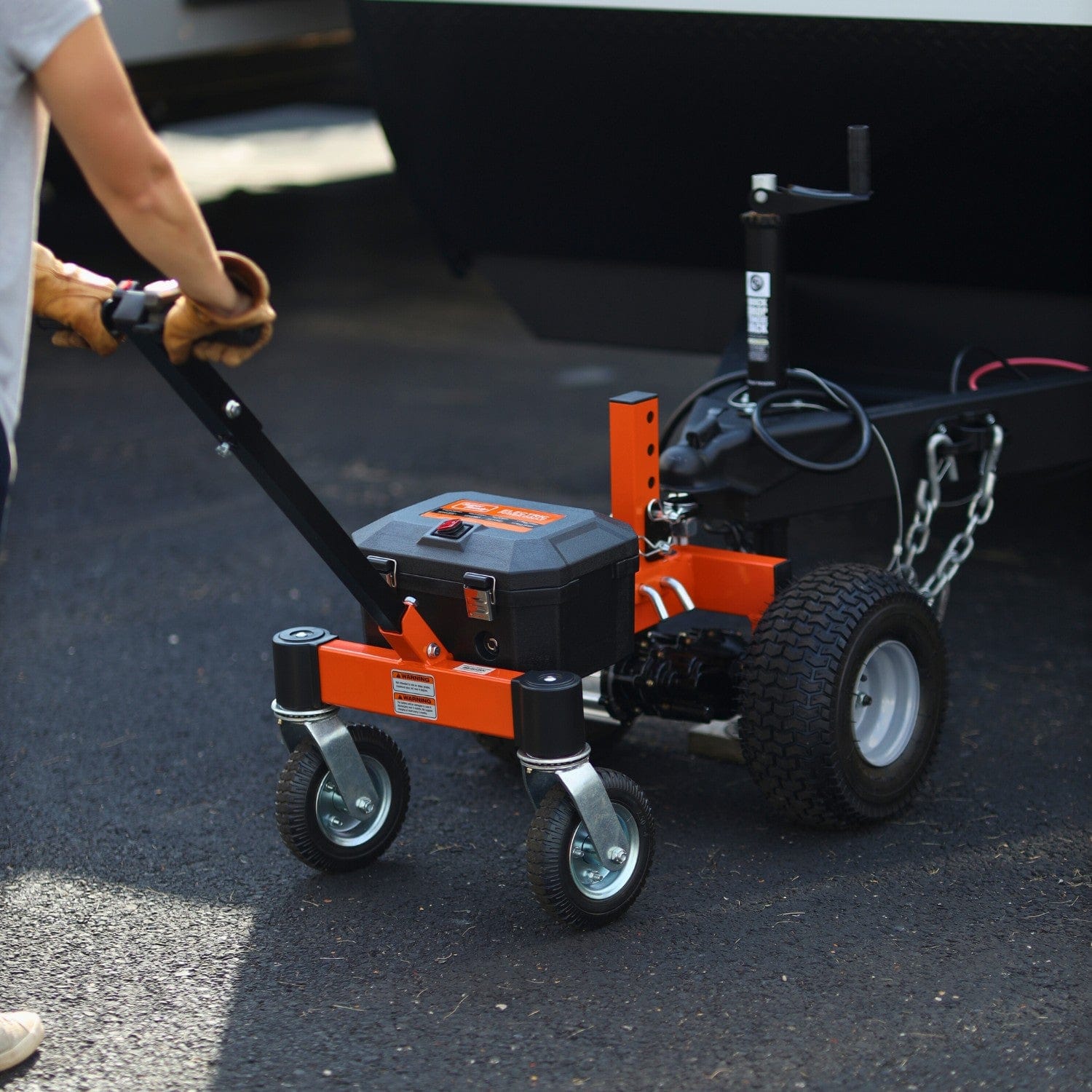
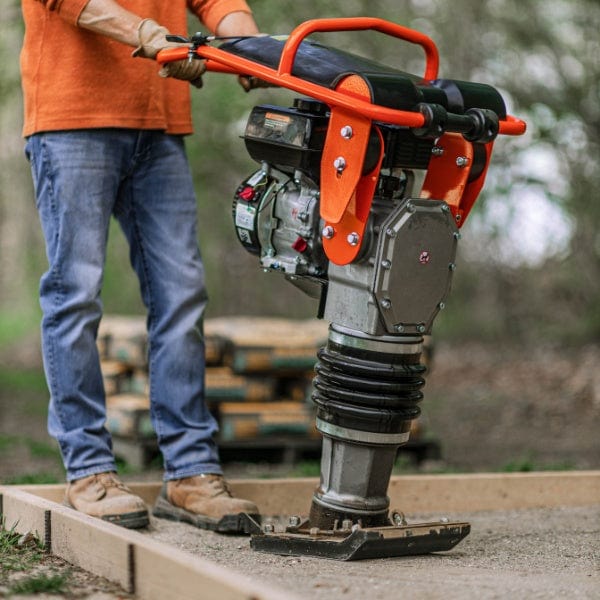
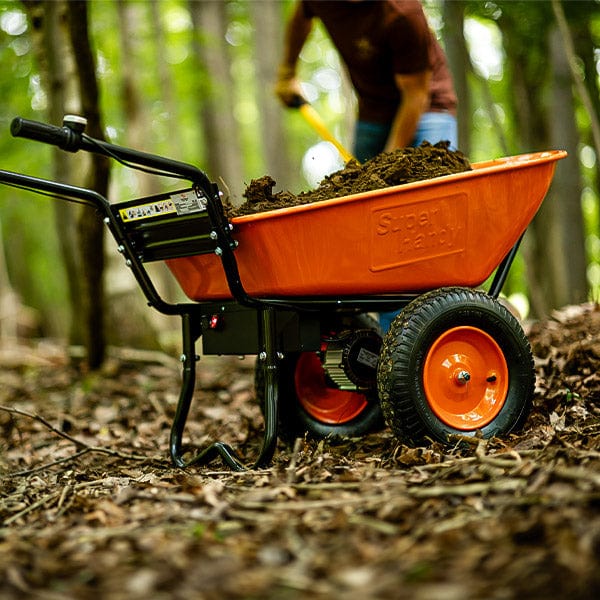


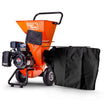
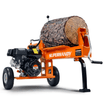
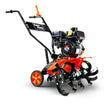
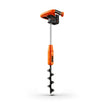
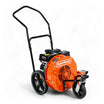
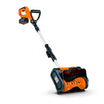
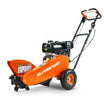
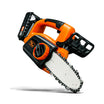

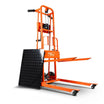
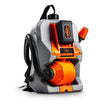
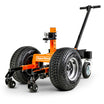
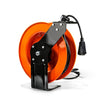
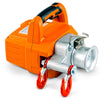
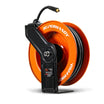

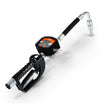

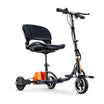
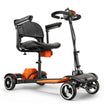
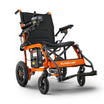
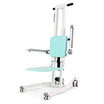


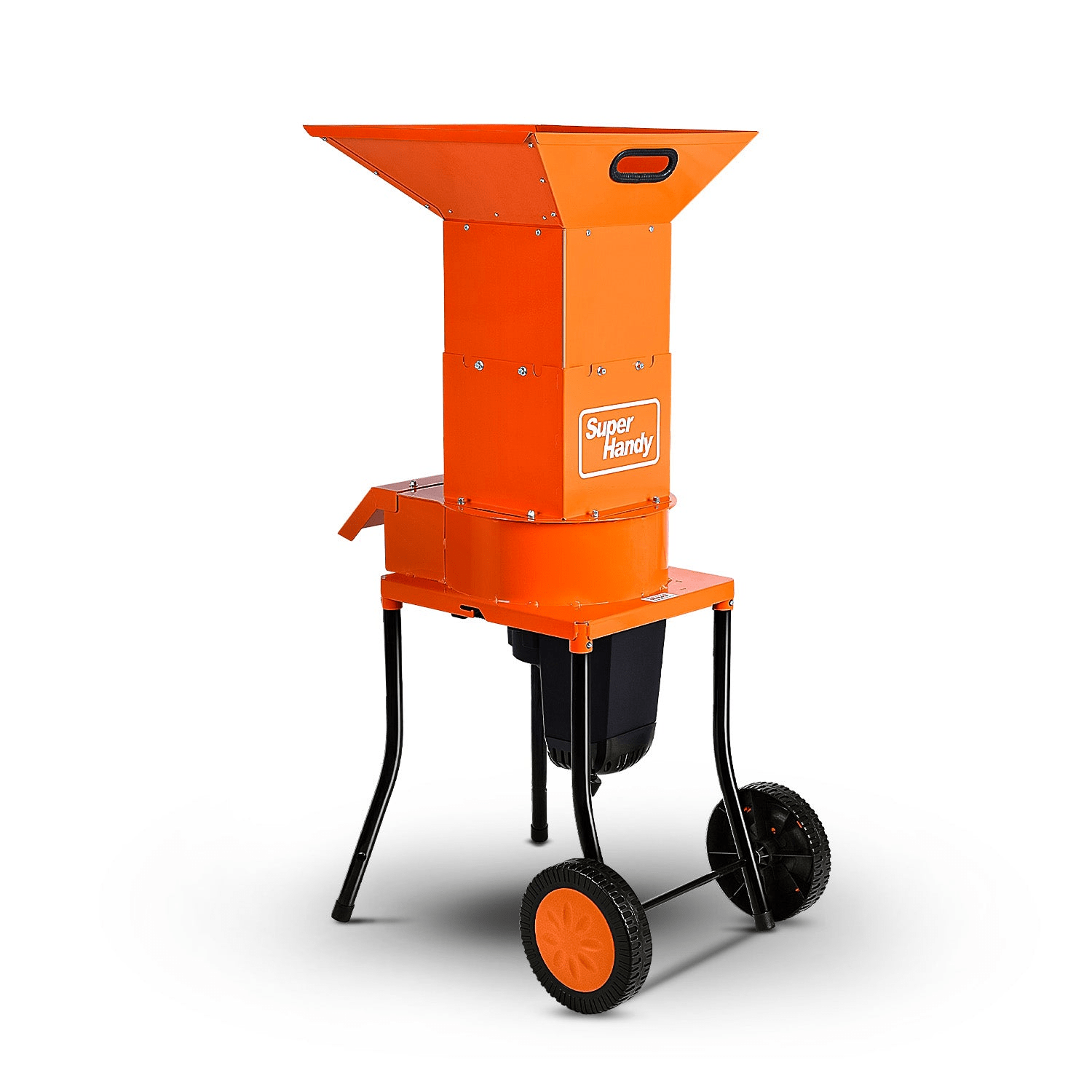
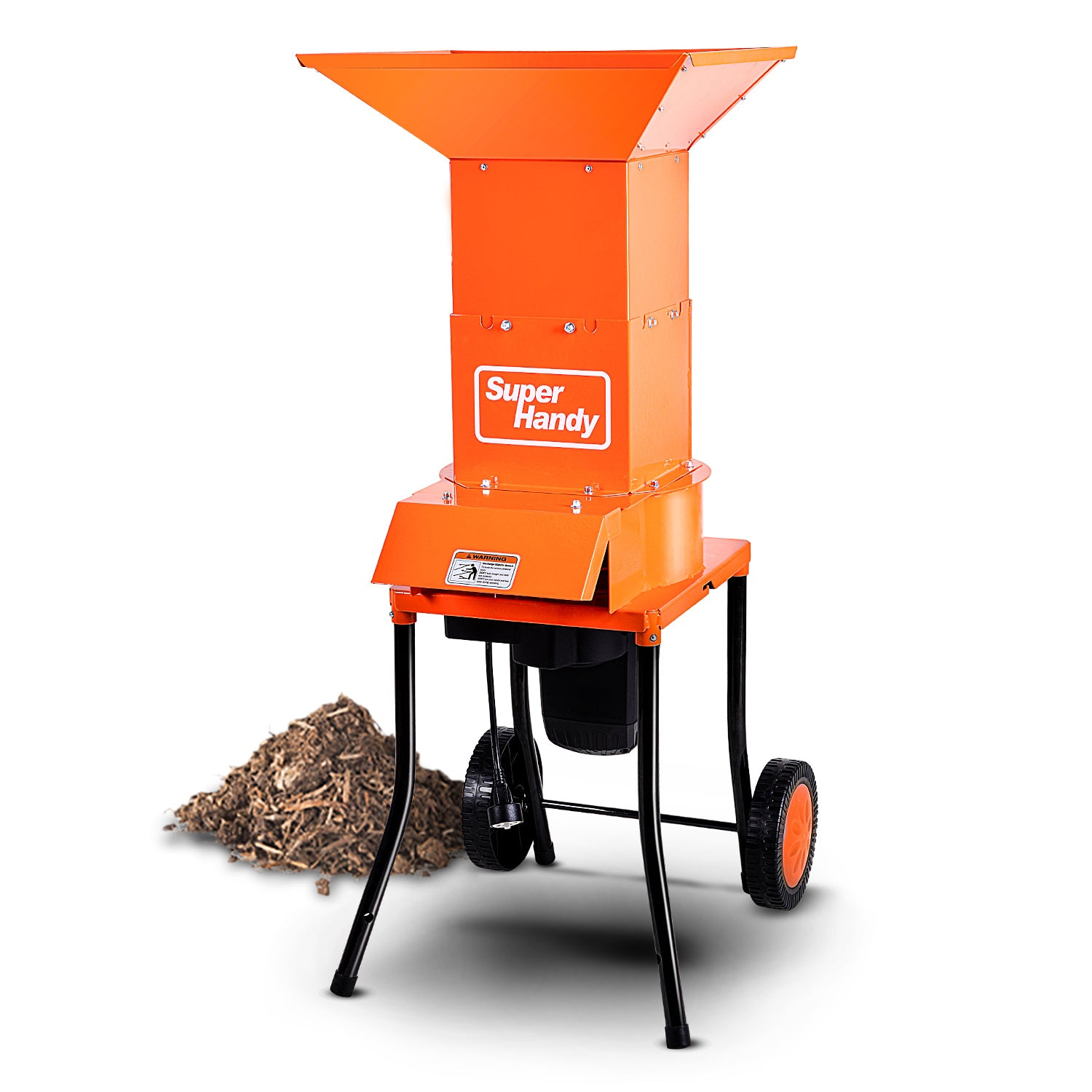
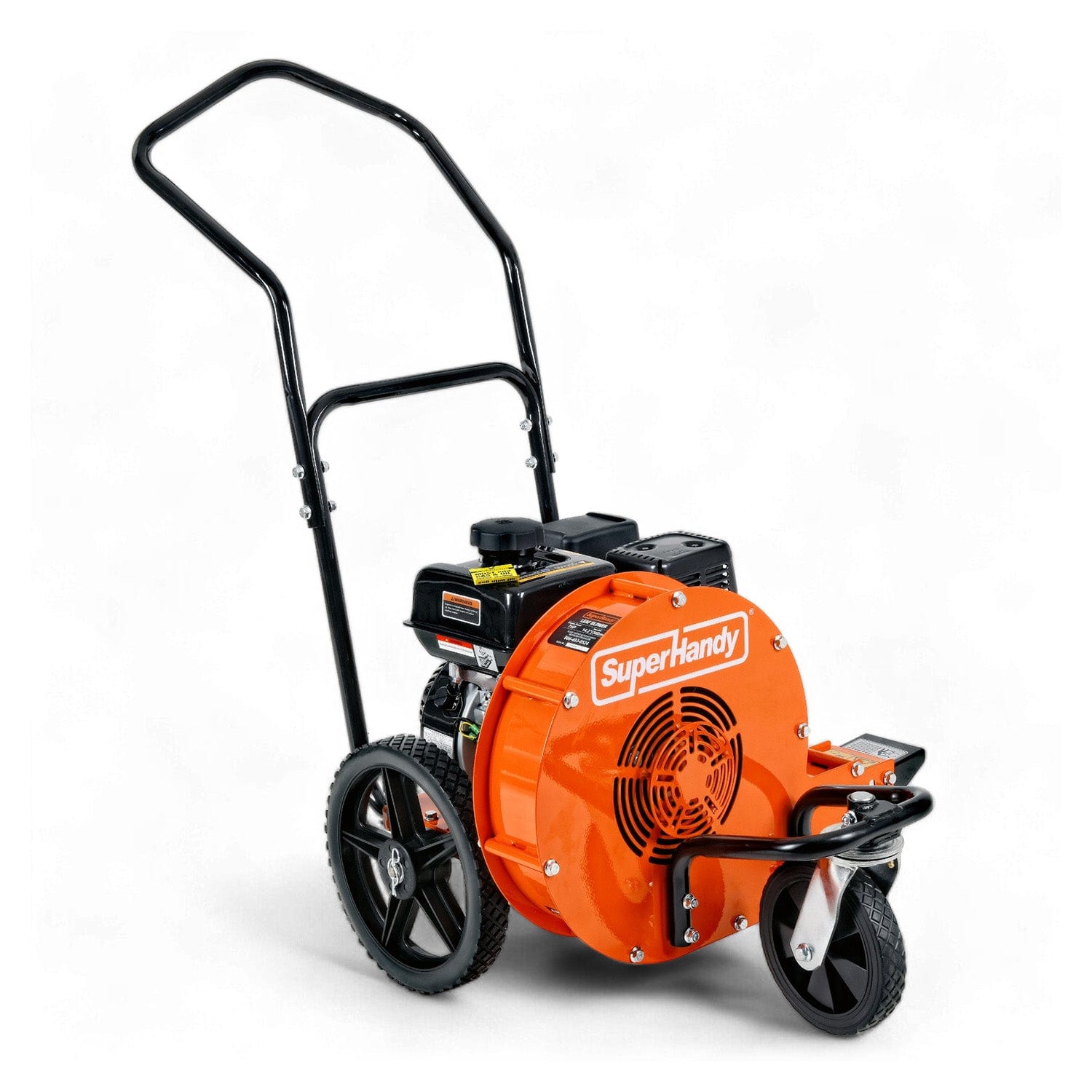
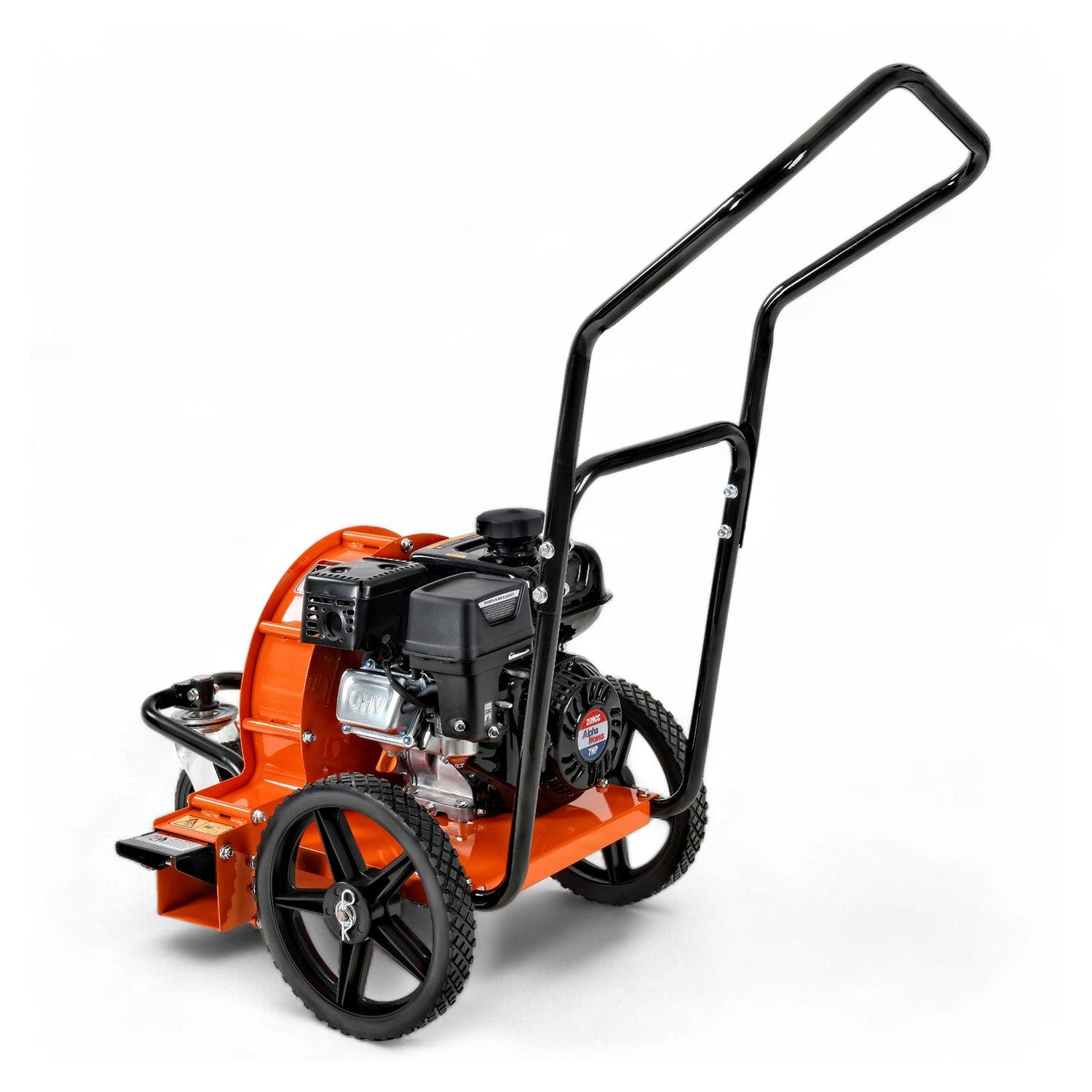
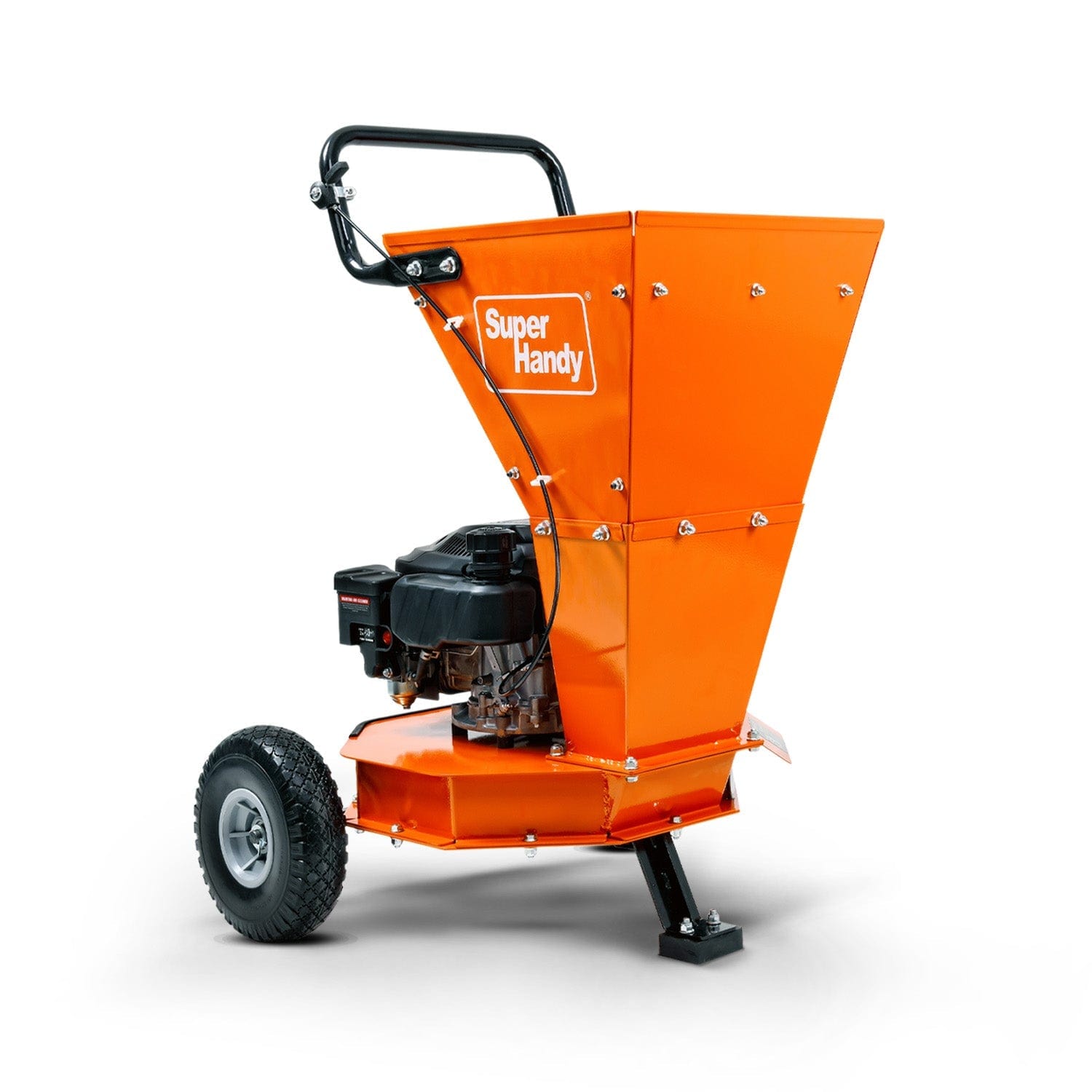
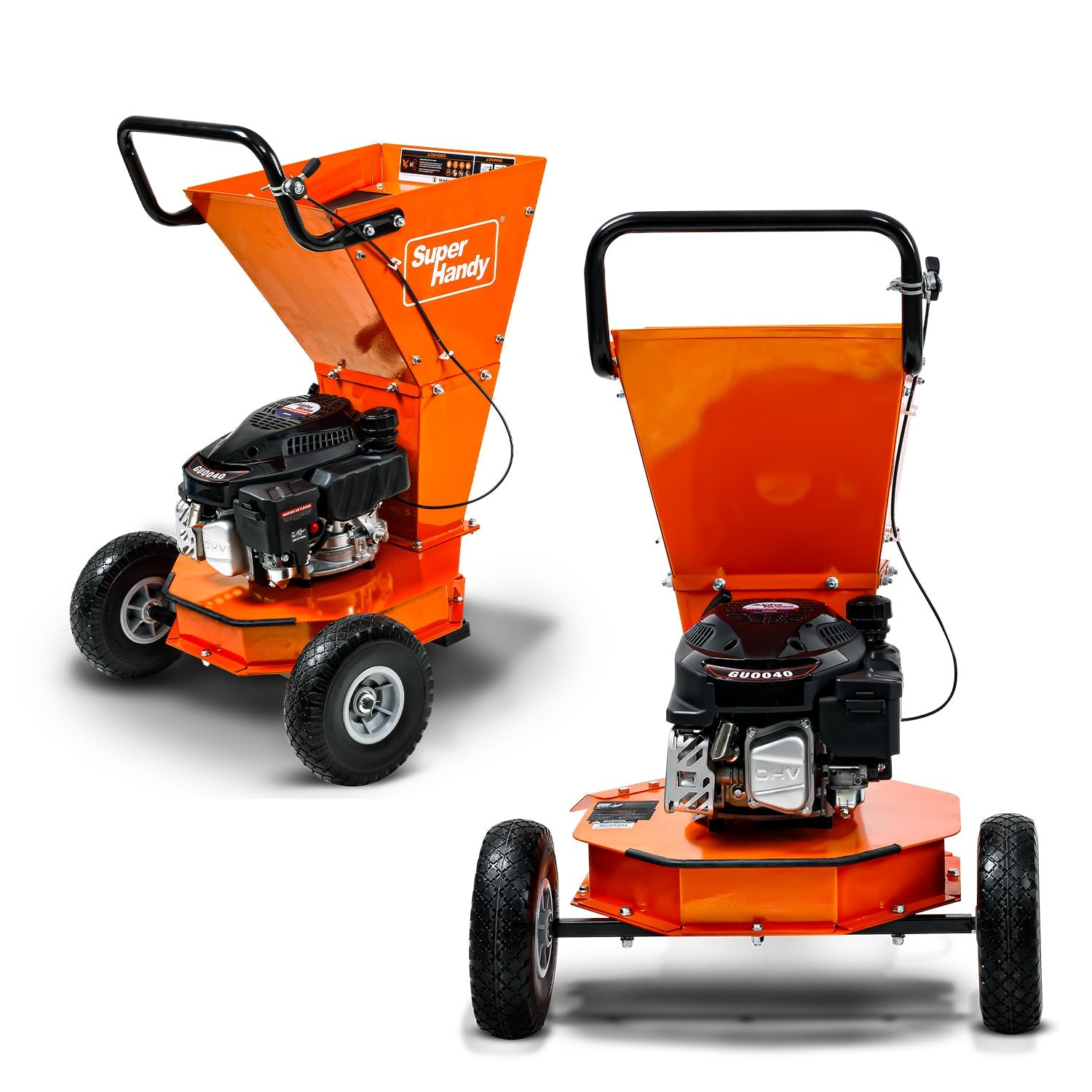
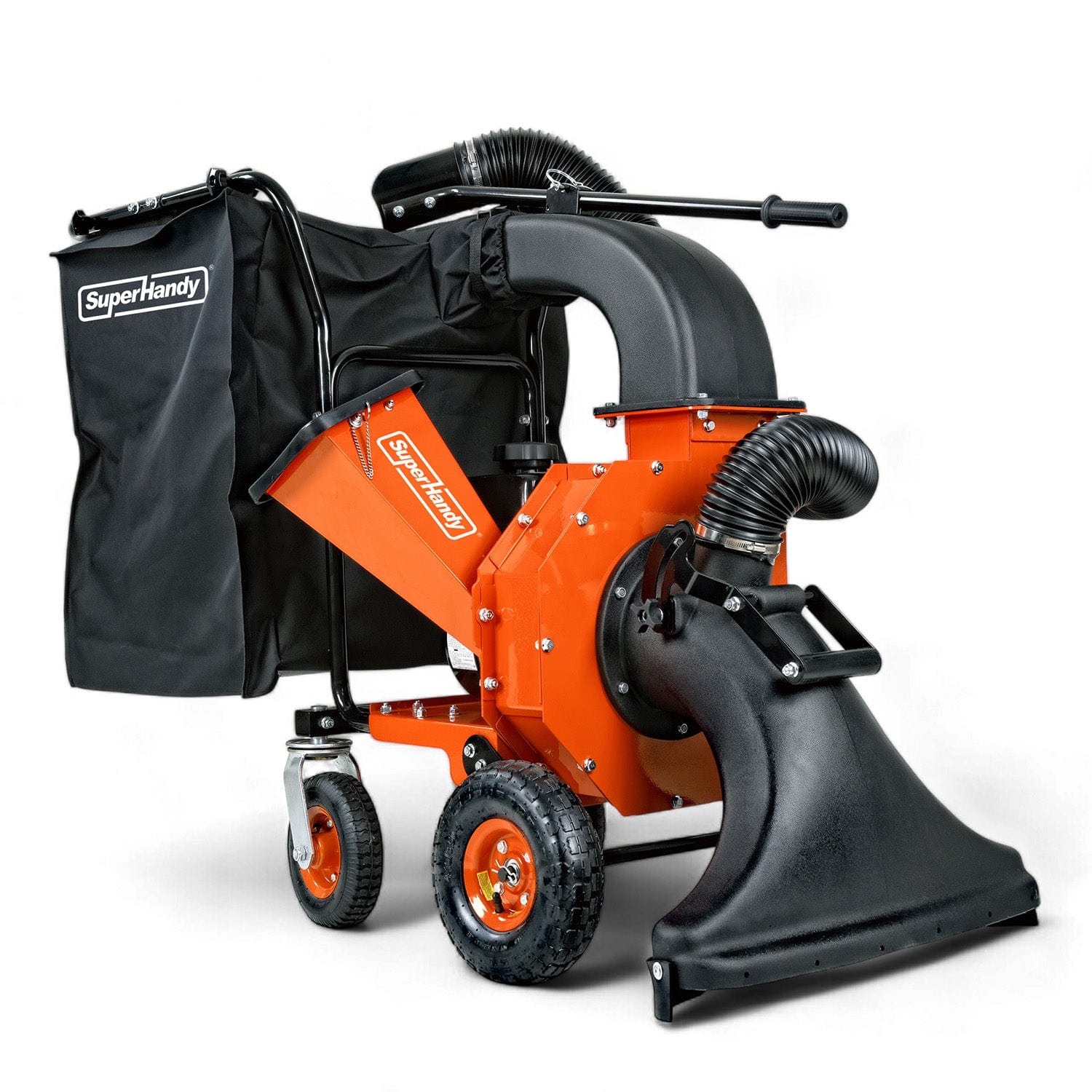
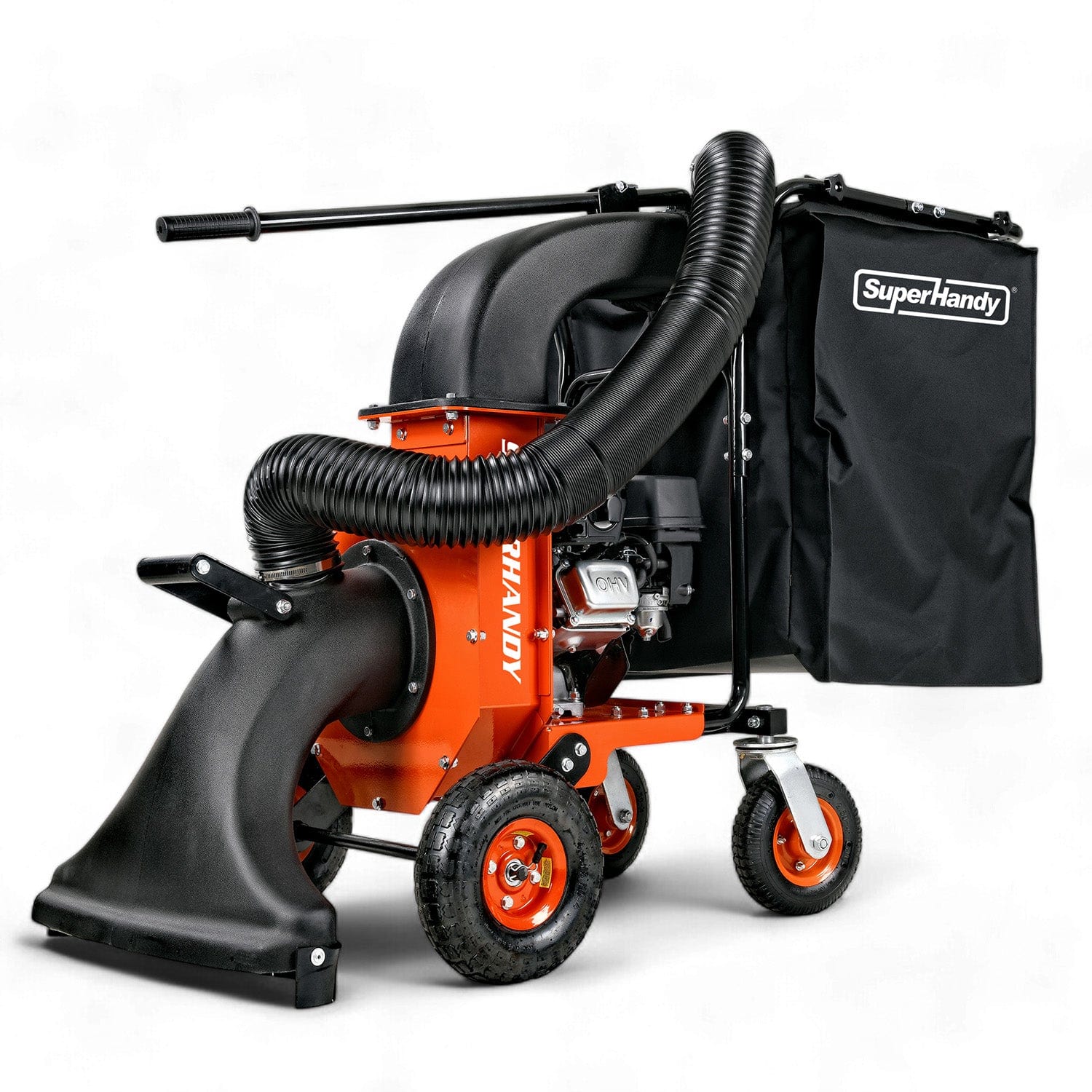
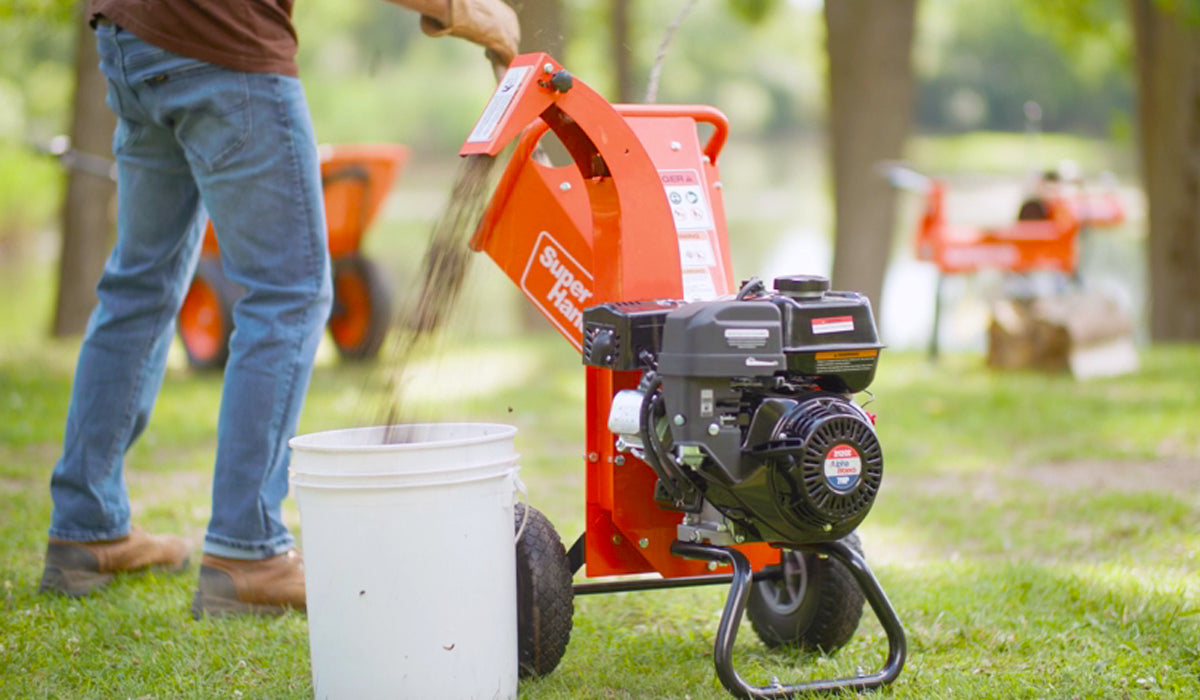
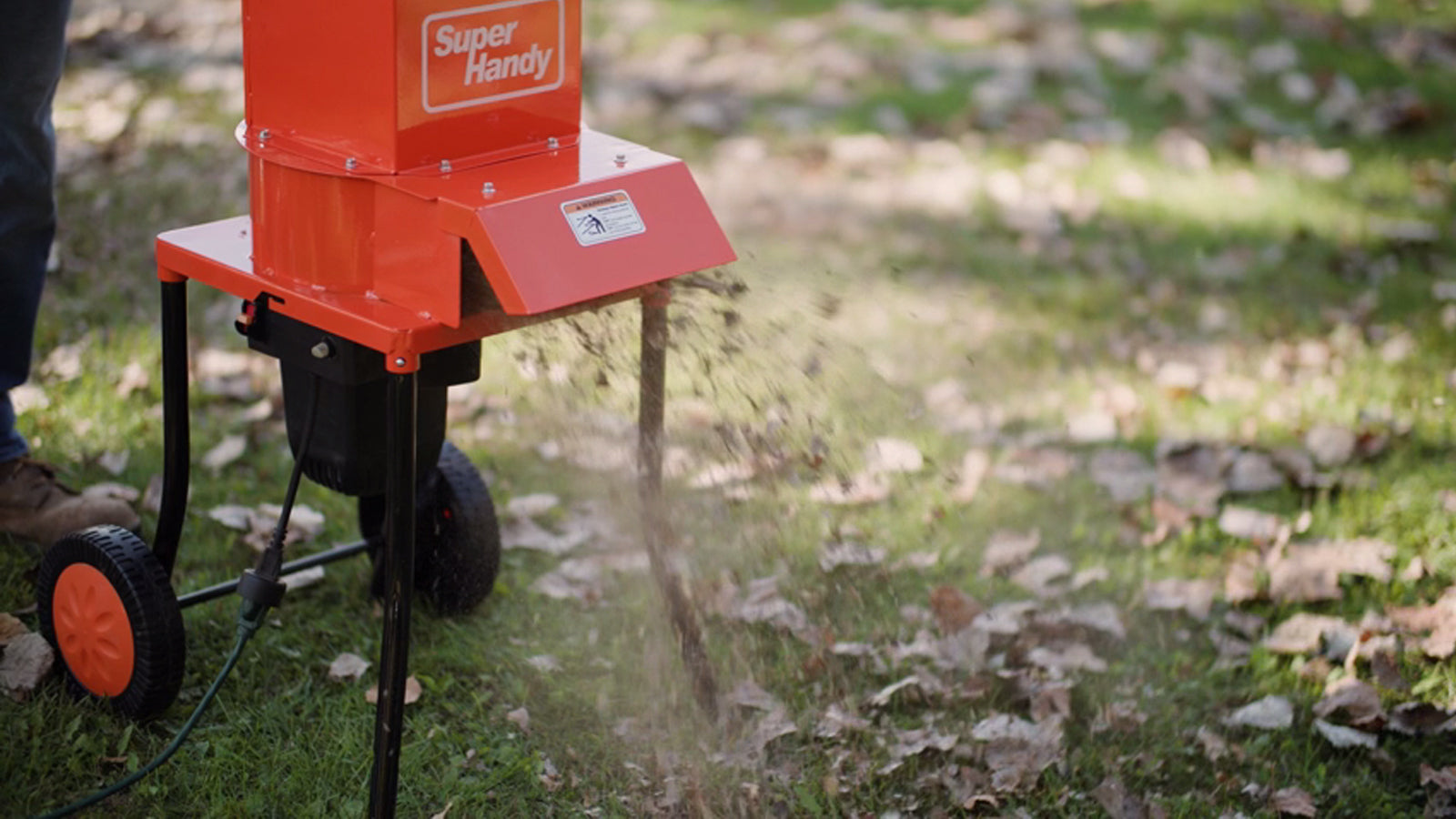
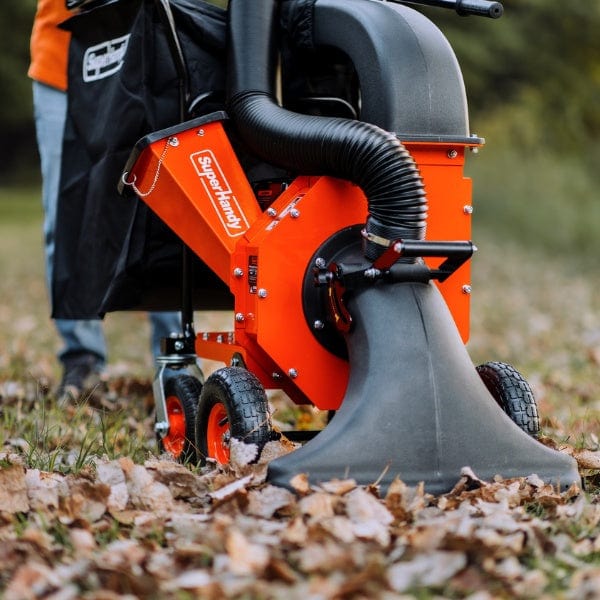
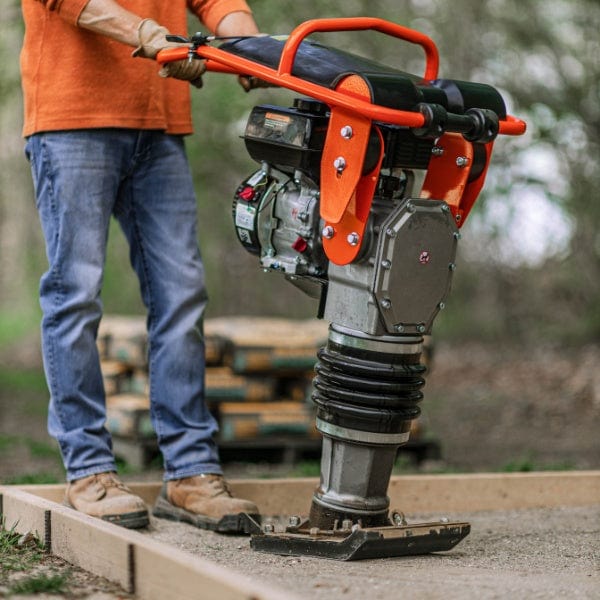

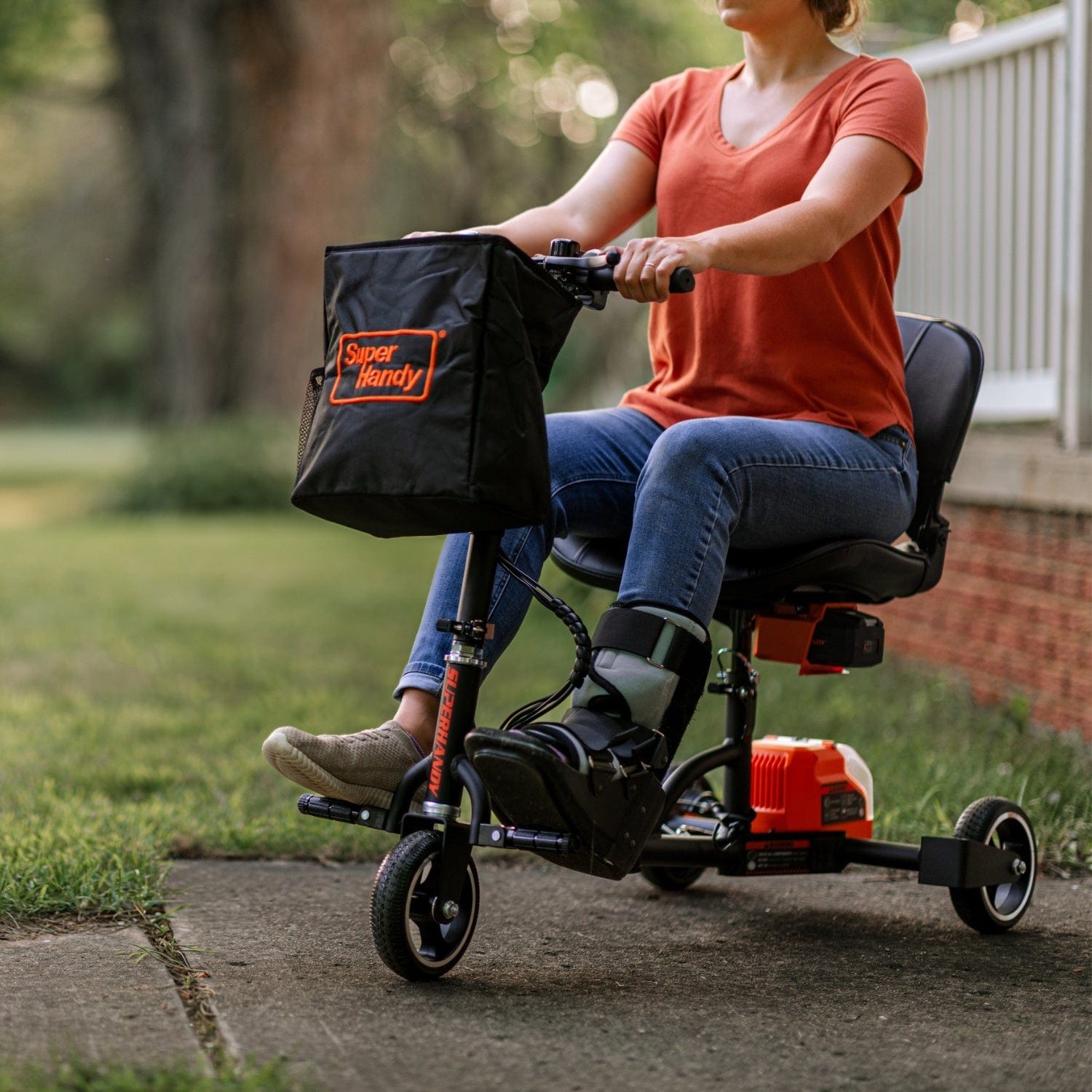
Leave a comment
All comments are moderated before being published.
This site is protected by hCaptcha and the hCaptcha Privacy Policy and Terms of Service apply.